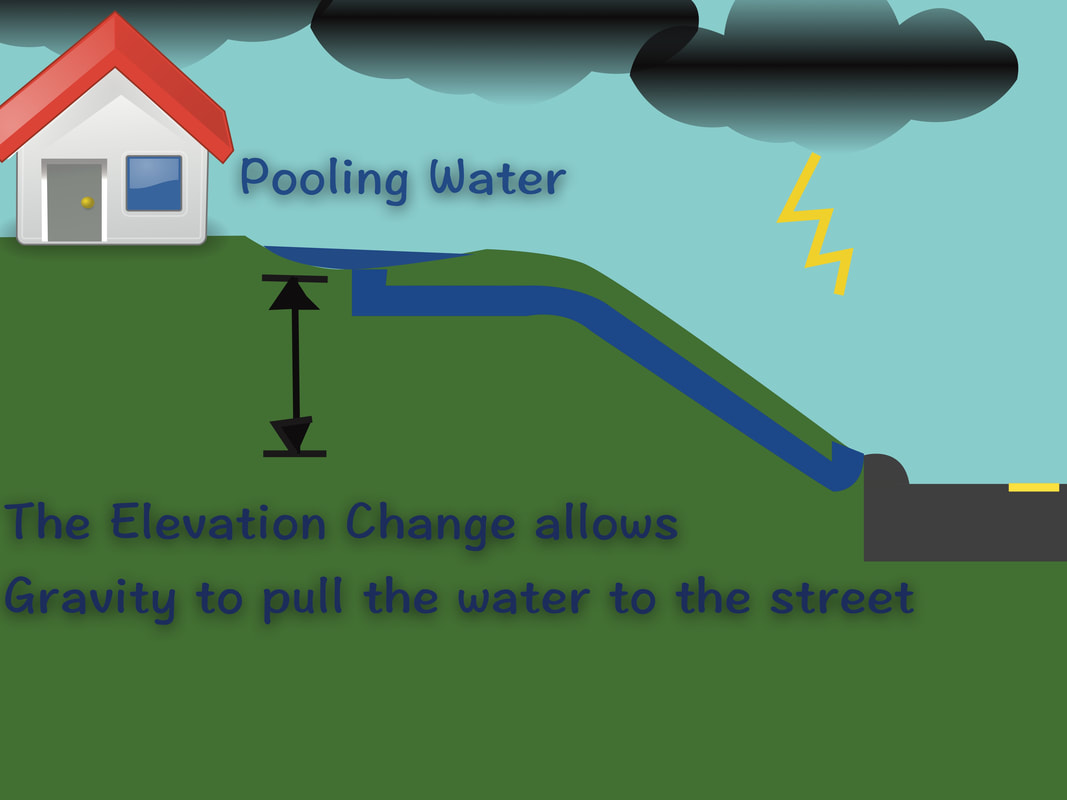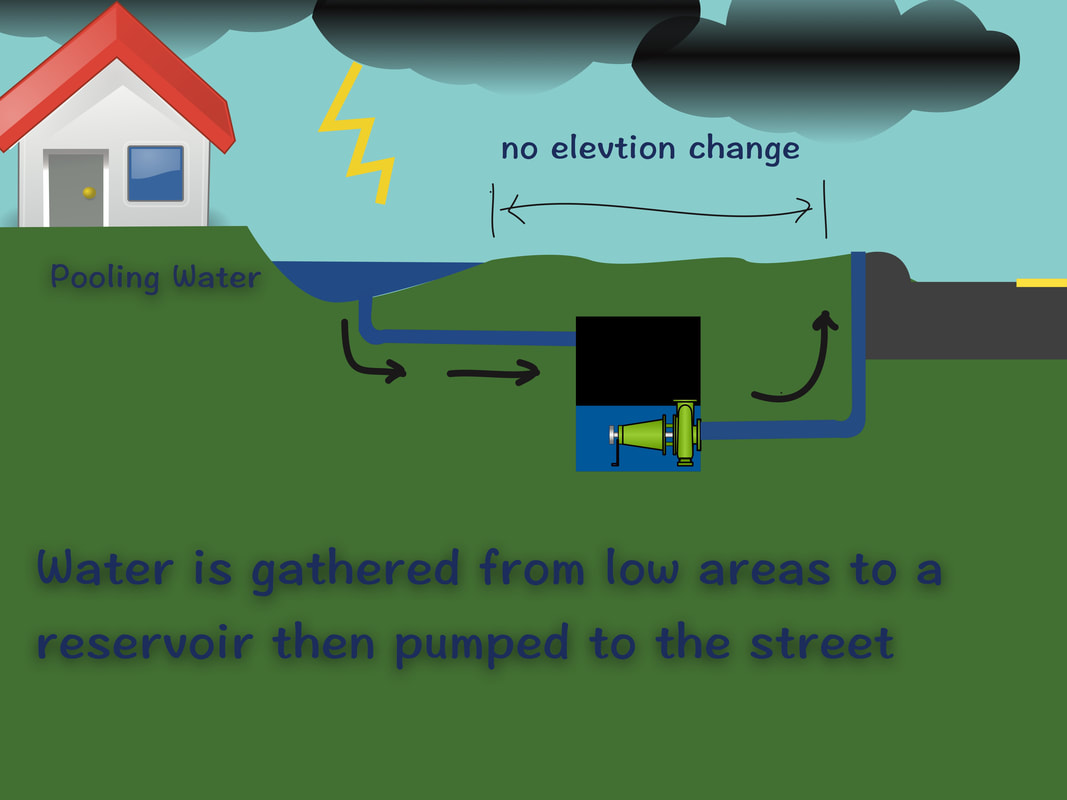Drainage
Advantages:
-Removes excessive soil moisture that can lead to foundation shifting.
-Drains soil preventing dead spots in lawn.
-Slows decaying of fences made of wood or iron.
-Reduces mosquitos and other pest that bread or are attracted to wet areas.
-Removes soggy areas that result in unusable areas.
-Removes excessive soil moisture that can lead to foundation shifting.
-Drains soil preventing dead spots in lawn.
-Slows decaying of fences made of wood or iron.
-Reduces mosquitos and other pest that bread or are attracted to wet areas.
-Removes soggy areas that result in unusable areas.
Do I need a drain for my yard?
Your yard should be graded first sharply from your house about 6-12 inches down in the first 10 feet. After the first grading it should slope 5-10 inches every 100 feet extending to the street or ditch. Many times builders so not install correct grading and water is left pooled either on the sides or rear of your house. You will know a drain is necessary if after a downpour you are left with areas that stay wet for long periods of time. Signs of this include standing water, dead grass, and possibly an influx of mosquitoes. The most critical of all problems of an improperly drained landscape is water standing directly against your house. This situation will lead to foundation shifting, broken plumbing, and even walls and bricks showing cracks.
Your yard should be graded first sharply from your house about 6-12 inches down in the first 10 feet. After the first grading it should slope 5-10 inches every 100 feet extending to the street or ditch. Many times builders so not install correct grading and water is left pooled either on the sides or rear of your house. You will know a drain is necessary if after a downpour you are left with areas that stay wet for long periods of time. Signs of this include standing water, dead grass, and possibly an influx of mosquitoes. The most critical of all problems of an improperly drained landscape is water standing directly against your house. This situation will lead to foundation shifting, broken plumbing, and even walls and bricks showing cracks.
|
How does a drain work?
Drainage works by gravity or a pump. Most cases do not call for a pump, but this cases will be explained. What happens normally is water gets caught in shallow dips, areas that are blocked by hardscapes, or improper grading. Most often the areas of pooling are higher in elevation than the street, where the water can be channeled down the city drain. With the installation of a drain, a pipe is connecting the low lying areas to a lower elevation. This allows gravity to pull the water down to the street and down the gutter. |
|
The situation that involves a pump is less common, but does happen occasionally. This happens when the low lying area is at a lower elevation than the edge of your property or street. Your house may still be above the street elevation, but due to poor grading there is not a slope to pull the water to the street. Installing a simple drain will not work, because the water can not overcome gravity without some input of work. This input of work would be a submersible pump (Sump Pump). Unfortunately, Sump pumps are more expensive to install due to more materials and labor. Although the cost may be higher, often there is no other solution. This system works by draining the low lying area/areas to a single collection tank where the pump activates to push the water to the higher elevation to be carried away by city drain. The disadvantages are higher upfront cost, small electricity cost and future pump replacement, but the advantage is removing the unwanted water. |
What do drains cost?
Drains usually cost between 9-12 dollars per linear foot. Cost can rise when there are excessive roots, sidewalks to tunnel under, or curbs that need to be cut to place a outlet. Most cases do not call for cutting a curb, but instead a pop-up emitter is placed next to the curb. When the drain has a flow of water the pop-up emitter will open and expel the water to the street.
Drains usually cost between 9-12 dollars per linear foot. Cost can rise when there are excessive roots, sidewalks to tunnel under, or curbs that need to be cut to place a outlet. Most cases do not call for cutting a curb, but instead a pop-up emitter is placed next to the curb. When the drain has a flow of water the pop-up emitter will open and expel the water to the street.


